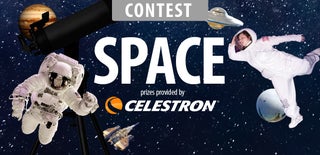Introduction: See Through Star Map
Road maps help us drive to new places. They have roads, cities, rivers and countries. We know our position on a map by reading our GPS coordinates on an electronic device.
Just like road maps, star maps help us navigate and locate objects in the sky. They contain stars, nebulae, galaxies, asterisms and constellations. They also have a system of coordinates which help astronomers determine the location of celestial objects.
The two common ways to find an object in the sky are either opening a star atlas or loading a planetarium software on a computer or tablet. While very detailed, I often find them cumbersome in the field. Books are heavy and sensitive to dew; electronic devices need to be charged and lose their battery quicker in the cold. Furthermore, screens usually emit a blue light that alters your low night vision.
This Instructable describes how to create a constellation map that doesn't need a battery and is impervious to water and cold. It also has a mythological depiction of the constellation that you can use as an overlay.
Step 1: Materials and Design
For this project, I used a 1/8" plexiglass sheet and a source of red light. Red is the only wavelength that doesn't affect your ability to view in the dark.
I created the source of red light by putting a few layers of tape onto the flash of a smartphone. Using the torch feature, you get a convenient source of light.
To trace the constellation on the acrylic board, I used a laser cutter. You could do it by hand with a utility knife or a dremel but it would take quite a lot of time. Basically, all you need to do is to scratch the surface of the plexiglass.
The image of Orion I used is a drawing from Johannes Hevelius. You will find other constellations on this page.
The star map comes from this page.
Attachments
Step 2: How to Use the Star Map
The map can be used both by day and night. All you need to do is to hold it in front of a dark area.
You can project the map on a wall by using a bright source of light or you can look through it at night to match the position of the stars in the sky.
You can overlay the mythological depiction of the constellation to see how early civilizations astronomers grouped the stars together. The constellations often have different shapes and names in each civilization. You can create as many overlays as you want.

Participated in the
Makerspace Contest

Participated in the
Space Contest 2016














